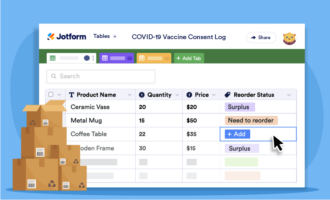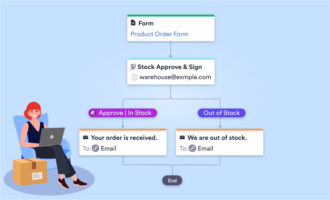Every seasoned professional who manages inventory has a perspective on optimizing inventory processes and making the most of warehouse space. After all, what works for some business models may not work well for others. But there are some basic principles that are applicable across the board. Take a look at these inventory management best practices.
Best practices for inventory management
- Keep your warehouse organized
- Label inventory appropriately
- Develop, document, and follow efficient storage processes
- Keep a modicum of overstock handy
- Maintain good relationships with your suppliers
1. Keep your warehouse organized
A warehouse can often feel like a bee’s nest with so many people and machines buzzing about. Because of all the activity and movement, it’s important that every item has its place and that everyone knows where those respective places are.
Deeana Radley, business and technology writer at Technology Evaluation Centers, says the importance of a well-organized warehouse is threefold:
- Items can be easily identified for customer orders.
- Inbound material can be received and stored efficiently.
- Customer returns can be more easily managed.
If you’re a small business just starting out, you may be able to get away with ad-hoc item storage — placing items wherever they fit. However, as you grow, haphazard storage can lead to significant issues, including inefficiencies and inaccurate customer orders.
2. Label inventory appropriately
“Inventory labeling goes hand in hand with inventory organization,” says Radley. This means that, on a macro scale, staff will be able to find the right section or area of the warehouse. On a micro scale, well-labeled inventory will help with finding the specific item on a shelf or in a bin.
Labeling and warehouse organization are closely connected; if one of these elements is missing, your inventory management system will be less efficient. For example, you could store 10,000 items in your warehouse and label all of them. This would ensure that once you’ve found the item, you can easily confirm it’s the right one. However, if your warehouse isn’t clearly organized by area or section, your initial search will be tedious and time-consuming.
3. Develop, document, and follow efficient storage processes
Document, document, document! This is a familiar business principle when it comes to processes. Developing a process is a good first step, but it must be documented and followed by all staff to provide consistent business outcomes. It’s especially important to document storage processes because one worker who isn’t clear on what to do and how to do it can throw the whole warehouse off.
Radley explains that process documentation should include procedures for physical interaction, material handling, safety guidelines, and quality of reporting. She recommends selecting key warehouse operations personnel to approve the documentation before considering them standardized. “Release the final documentation to relevant personnel with formal training and, ideally, test their knowledge of the processes so that they can confidently follow them,” Radley says.
4. Keep a modicum of overstock handy
Accounting may cringe at the idea of keeping overstock because of the costs, but your operations department understands the pain of not being able to fulfill customer orders because there simply aren’t enough items available. Not only does this result in lost sales, but it can also tarnish customers’ view of your brand and make them seek out a competitor.
Arthur Ruth, vice president of operations at Memphis Maids, says it’s often better to have more than you need instead of keeping the minimum amount on hand. “While it’s not feasible for every business and every item, products you use or sell regularly are a good place to start keeping overstock.”
He explains that overstock is especially useful when you have deals in place for quantity discounts. Buying in bulk is often how businesses improve profit margins. However, you lose that margin when you’re forced to buy products at full prices because you need to provide business services or fulfill customer orders immediately.
5. Maintain good relationships with your suppliers
Paul Farmer, vice president of marketing at Riverwood Cabins, reminds us that inventory management isn’t always about the warehouse or the items it stores. “Inventory management is also about the people you work with, especially your suppliers.”
He explains that most businesses can’t (and don’t) do everything themselves. There’s always a third party providing something, whether that’s software, materials, or completed products.
“Whatever your business model,” Farmer says, “remember to focus on solidifying good relationships with those who provide products and services that help you deliver excellence to your customers. If you need to pivot or adapt your operations, they’ll be happy to help.”


















Send Comment: